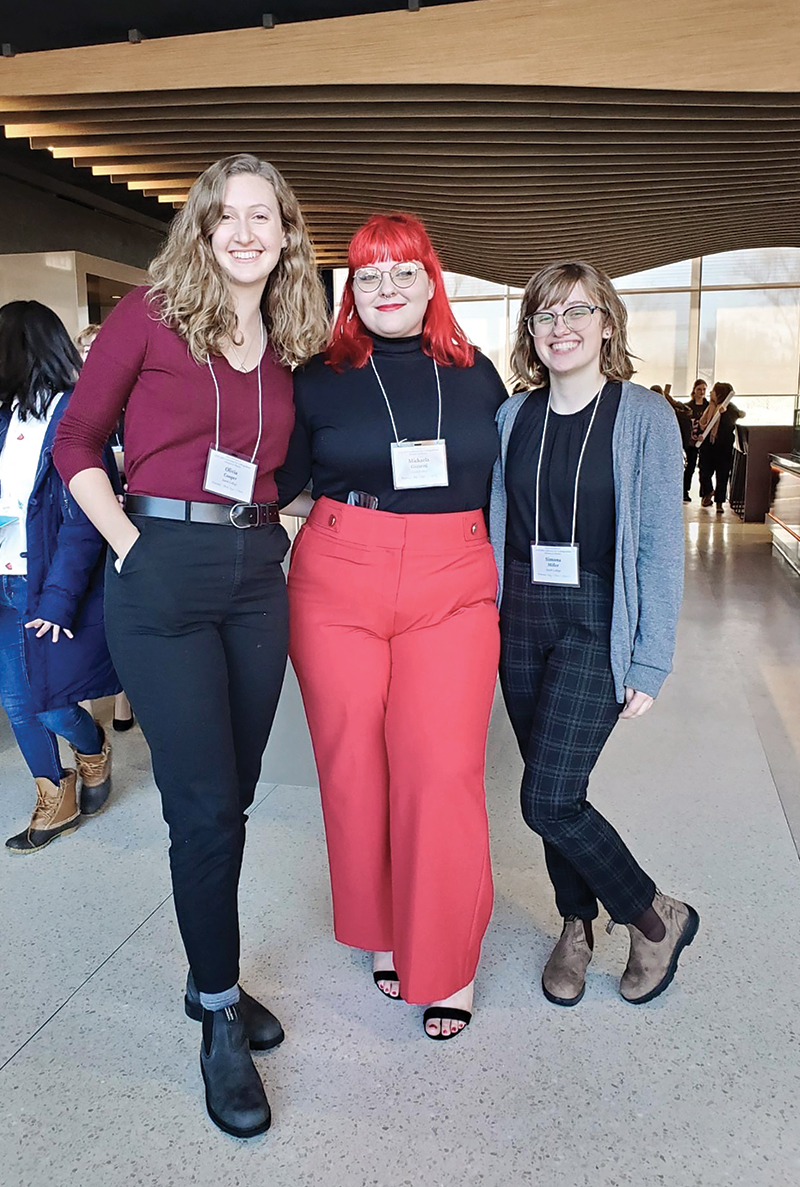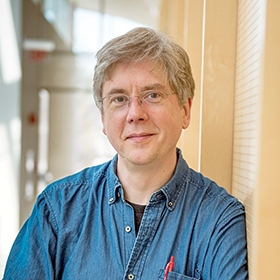Teaching Change: The Importance of Climate Communication
Spring
2020
Feature
Teaching Change: The Importance of Climate Communication
Olivia Cooper, SPS member, Smith College
 Show, don't tell. I was reminded of the value of this approach by Professor Nathanael Fortune, who teaches physics at Smith College and gives public talks on climate change to legislators and community members.
Show, don't tell. I was reminded of the value of this approach by Professor Nathanael Fortune, who teaches physics at Smith College and gives public talks on climate change to legislators and community members.
 “Showing” is especially important, he says, for communicating often misunderstood issues like climate change. For example, he noticed that many people were having trouble understanding the mechanisms of climate change and fully grasping the time scale of that change. Wondering how scientists could explain it better, he searched for a good analogy. Eventually, he stumbled on the bathtub.
“Showing” is especially important, he says, for communicating often misunderstood issues like climate change. For example, he noticed that many people were having trouble understanding the mechanisms of climate change and fully grasping the time scale of that change. Wondering how scientists could explain it better, he searched for a good analogy. Eventually, he stumbled on the bathtub.
Drowning the Planet
We know that if the water is left running in a plugged bathtub, it will overflow. Now imagine that the tub’s drain is clogged, so that the tub empties slowly while water flows in quickly. In this scenario, the equilibrium level will rise and eventually the tub will still overflow.
Now imagine the bathtub is Earth, the water is CO2 and other greenhouse gas emissions, and the water level is the average global temperature. Energy, in the form of radiation, comes into the Earth’s atmosphere from sunlight and is partially reflected back into space in the form of blackbody radiation. In changing the atmosphere, cloud cover, or amount of ice on the surface, we change the amount of energy that is reflected back. This essentially “clogs the drain,” a process often augmented by positive feedback loops. For example, global warming melts the permafrost, which releases more greenhouse gases into the atmosphere, which leads to more global warming.
Even as we’re clogging the drain, we’re drowning the Earth, filling up our planetary bathtub with CO2 twice as fast as nature is taking it back out. This is tipping the scale and driving the global temperature higher and higher.
Fortune uses this analogy to show how even leveling off our emissions will not solve the problem—we actually have to reduce the rate at which they’re emitted. We have to turn the water way down.
At his public talks and in his courses, Fortune has found illustrations like the bathtub analogy to be effective science communication tools. Visuals and analogies that relate to everyday human experiences make science concepts, especially those as complex and misunderstood as climate change, easier to grasp. Furthermore, this method of teaching helps audience members to evaluate the veracity of the information themselves, rather than just trusting a talking head. They may even be empowered to explain it to their peers in their own words.
A Concentration for the Modern Era
As an astronomy and physics major at Smith, I use similar communication tools to explain my particular field of science. Still, as I look beyond the atmosphere at distant galaxies, I take care not to neglect my stewardship of the Earth. So when my astronomy advisor, Professor James Lowenthal, told me about the Climate Change Concentration at Smith—a program for which Fortune is also an advisor—I realized it would be the perfect way to continue engaging with climate change while pursuing a career in astronomy.
Established in 2014, Smith’s Climate Change Concentration program allows students to become more engaged with and informed about climate change through a deliberate selection of courses and experiences. As climate change is inherently interdisciplinary and relevant to every field, the concentration brings together students across majors—from astronomy to government to studio art—and is designed to stitch together the skills each student needs to address climate change in whatever field they pursue after graduating from Smith.
Within the concentration, I focus on climate communication and education. This focus has shaped my coursework and practical experiences. Last summer, I published research I conducted on climate literacy in undergraduate climate change courses that informed a climate education program in my home state of California. I had the opportunity to bring together a range of passions—including a sense of belonging in California, scientific research, climate education, and science writing—to do productive work for both myself and the fight against climate change.
More recently, I put my climate communication skills to the test by running an outreach project on the health impacts of climate change at a hospital in my rural Northern California hometown, which braces for the worsening impacts of wildfires each year. Equipped with the background in climate science and communication techniques I developed at Smith, I spoke with medical professionals who have known me since I was half my size about emergency preparedness, environmental awareness, and sustainable practices in the face of catastrophic wildfires. These experiences were rewarding with respect to my future career as a researcher, as well as to my personal journey communicating climate change.
Putting Climate Change on the Syllabus
My curriculum within the concentration is self-designed and has included classes related to climate change in English, psychology, astronomy, and other departments. This interdisciplinarity is something both Fortune and I would love to see more of in higher education curricula.
While I value the classes I took that specifically focused on climate change, we need to do a better job of integrating climate change into core courses. For Fortune, that means not only designing an introductory-level physics class called Energy, the Environment, and Climate Change but also dedicating a week of Introductory Physics II (focused on electricity and magnetism) to the absorption and emission of electromagnetic waves spanning wavelengths, using the example of global warming and the greenhouse gas effect to teach the Stefan–Boltzmann relationship.
Putting climate change on the syllabus shouldn’t be limited to physics classes. Economics courses could cover how industrial capitalism and neoliberalism affect carbon emissions. Literature classes could discuss how climate change has transformed the genre of environmental literature since the Industrial Revolution. Climate change touches every field, and its study is inherently interdisciplinary.
To dispel misconceptions, raise awareness, and mobilize change, we need to incorporate this interdisciplinary mindset while teaching climate change, in addition to using imagery like Fortune’s bathtub analogy. In presentations, conversations, and especially in introductory or gateway classes, educators and scientists have the opportunity and responsibility to integrate climate change into their curricula, from physics to film studies to sociology and beyond. By teaching climate change, we can contribute to a better understanding of this global issue and advocate for science, exploration, and curiosity, practicing stewardship for climate change awareness and action.
